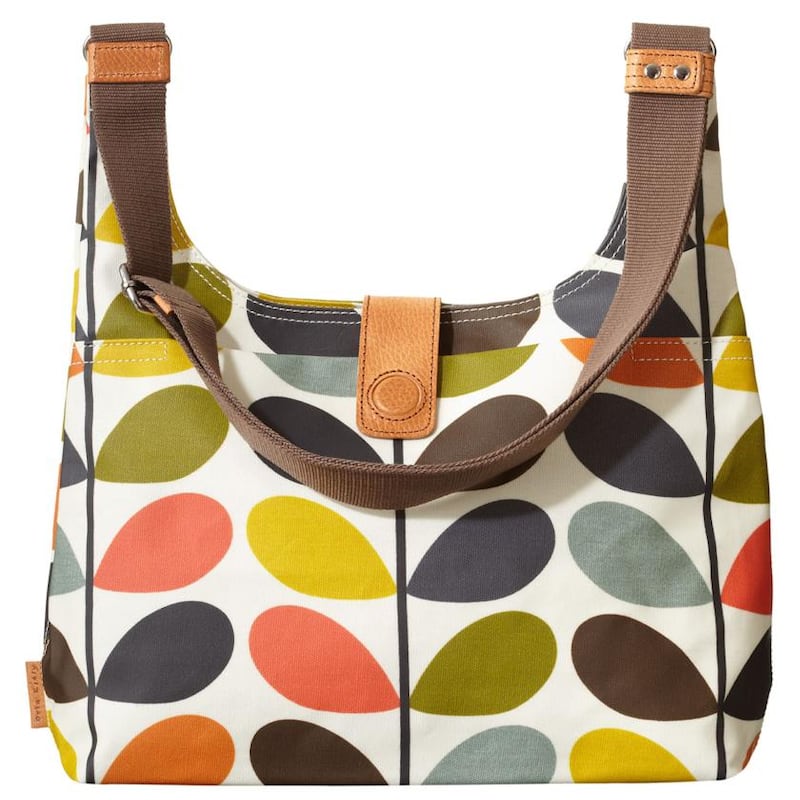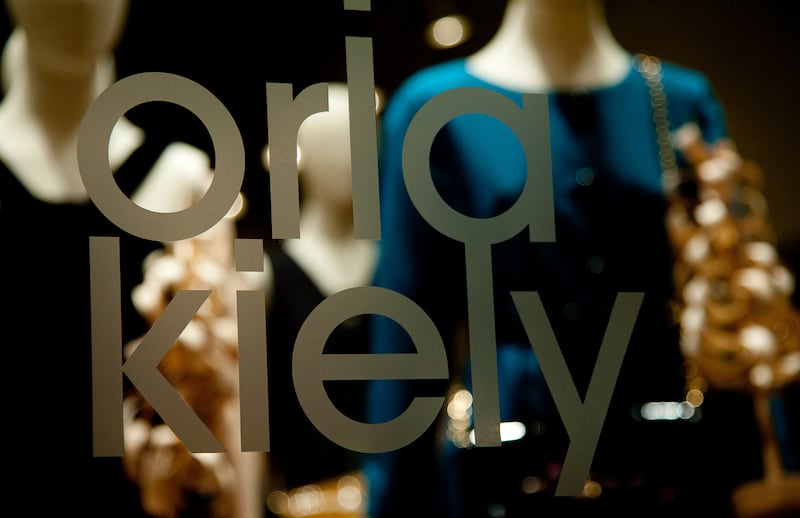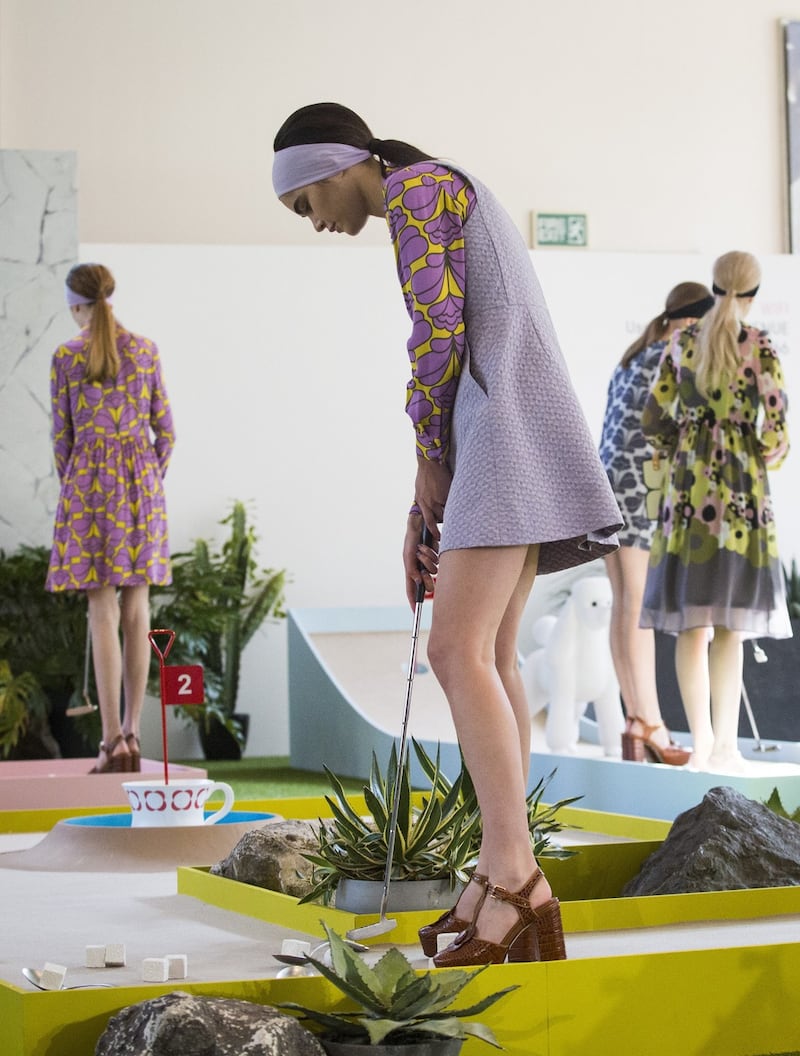The announcement this week that Orla Kiely has closed down her retail and online business came as a shock in Ireland and elsewhere.
The London-based Irish designer, famous for her stem graphic and known as "the Queen of Prints", would have appeared to be at the pinnacle of a successful career, with flagships in New York and London, a store in Seoul, another in Tokyo, an OBE, her Life in Pattern book, her image on an Irish postage stamp and a major retrospective of her work currently at the Fashion & Textile Museum in London, its first exhibition of a designer from Ireland.
The turnover for the UK business filed in March was about €9 million, and the Kiely Rowan plc business was still making a profit, albeit small in relation to the extent of its activities and her public profile.
How Kiely and her husband, Dermott Rowan, developed the business from making bags on their dining room table to a global brand is the stuff of legend
To all intents and purposes, Orla Kiely was Ireland’s most successful and best-known fashion and textile designer. Though her retail and online business is now in voluntary liquidation, her Home and Design licensing business “will not be affected and her accessories and homewares will continue to be sold”, according to the rather blunt announcement on the website declaring the cessation of trading on September 17th. It did not mention staff losses involved in the shops, at her headquarters or online.
In a licensing arrangement, the designer designs a product and another party takes responsibility for its manufacture, marketing and selling. It is a lower-cost model for designers, who get a percentage of the sale without the “heavy lifting” of labour and rental costs. The model works well for many designers and others, including John Rocha and Paul Costelloe.

Storm ahead
Three days before the closures, Kiely was a guest speaker at the V&A in London, discussing A Life in Pattern and betraying no indication of the storm ahead.
How she and her husband and business partner Dermott Rowan, childhood sweethearts, developed the Orla Kiely business from making bags on their dining room table in Canada to an internationally recognised global brand with innumerable awards and accolades is the stuff of legend.
For a designer who started her career working on Post Office uniforms with Paul Costelloe in Dublin after her graduation from NCAD, she gained further experience as a pattern designer in London before completing an MA in knit from the Royal College of Art.
A job in Canada followed, and it was there the couple starting making bags as a sideline. Back in London, she freelanced for Marks & Spencer and was later invited to create a designer range for Debenhams.
By then married with two young children, the couple now had the financial clout to start up on their own, with a handful of accessories and bags decorated with what would become her familiar playful trademark motifs. Kiely’s retro-pattern language with roots in the 1950s and 1960s – now called mid-century modern – was, and remains, her creative background and signature.
Her love of Danish and Finnish designers showed in the simplicity and clean graphic imagery of her designs, which chimed with a new generation and quickly established a following. “I remember we had a green Formica kitchen at home with an orange ceiling, and growing up I loved all that,” she once told this writer, explaining her colour choices.
She is close to her family in Dublin, and her father ran Kielys pub in Donnybrook, also in the news currently as it is up for sale.

Fifteen years on, her prolific hand was seen everywhere – with no boundaries to its popularity and widespread application. A shop had opened in London, followed by another in New York. Orla Kiely’s print could be found on cars (a limited-edition Citroën), a fragrance, on kitchen and homewares – and even on a London bus.
Twice yearly, she continued to show her collections at London Fashion Week – innovative presentations rather than the conventional catwalk, creating theatrical scenes like a 1950s typing pool, a crazy golf course, a florist shop, using top photographers, stylists and up-and-coming young moviemakers to promote the brand.
Such exposure, at anything from €100,000-€300,000 a show, was a considerable cost to sustain but gained the desired publicity. Well-known public figures Alexa Chung, Kate Middleton and Keira Knightley kept the Kiely name and her dresses in the headlines.
In the background, Dermott Rowan masterminded her progress and expansion, dealing with the business side, doing the financial talking and driving the deals. He registered all the prints worldwide and developed the profitable licensing side, leaving Kiely free to design – it was viewed as a dynamic partnership.
“Dermott has built up a style business and has done it in his own way. He is good in a crisis and is very passionate about what we do,” she once observed. His acumen was much in demand. A regular speaker at business seminars at home and abroad, he advised Bord Bia on brand development, was on the board of the Design & Crafts Council of Ireland, and played a role in Irish Design 2015.
So is the entry into voluntary liquidation of Kiely’s retail and online operations another astute business decision by Rowan and Kiely, or an example of commercial misjudgment?
Brian McGee, an experienced design industry executive, concedes that the growth of the Kiely brand was “amazing”, but that retail is struggling at the moment.
“The retail apocalypse is really having an impact,” he says, “so having a flagship is not easy to maintain, and there can also be issues of over brand extension when you stretch yourself too much.
Her homewares business remains very big, though it is going to be difficult without a flagship because that defines the brand. Flagships are very expensive to run, and the challenge to retail happening everywhere is driven by real-estate costs and online.”

Commercial sense
Other industry outsiders agree the decision to close down the shops and online business makes commercial sense at a time of retail crisis. “Retail is in a horrible place at the moment. Bricks-and-mortar businesses can lose money easily, and manufacturing operations are capital-intensive and [have] no guarantee of success in a challenging economy,” says Donal Bolger, a Dublin licensing specialist who has worked in the design business.
“Licensing makes sense because it does away with the heavy lifting typically associated with manufacturing and retail operations. So it can be a more manageable business for designers as it allows them focus on their key strengths, with fewer risks if their underlying retail and manufacturing businesses are struggling and eating into profits.”
It could be argued that the brand’s overexposure damaged its desirability and that its ubiquity – her bags could be found in Tesco – sullied the reputation of Orla Kiely. A more judicious choice of partners might have served the brand better. On the other hand, her fashion collections had a style of their own that didn’t necessarily depend on pattern.
Some point out that independent designers such as Stella McCartney make money only from collaborations like hers with Adidas, while Victoria Beckham’s fashion label – her collection much lauded by the British press at her London fashion debut this week – has sustained losses of almost £12 million over an eight-year period.
Those losses increased by 78 per cent to £8.4 million in 2016 due to large investments in design, marketing and sales. Her company, however, has now attracted £30 million from private investors.
Orla Kiely has sustained herself for a long time on a particular plain, but it has to be where customers are going, and partnerships are the best way forward
According to Eddie Shanahan, a well-known Irish fashion and retail specialist, retail eats into profits for small design and manufacturing companies, making costs and overheads too onerous.
“Orla Kiely has sustained herself for a long time on a particular plain, but it has to be where customers are going, and partnerships are the best way forward. I don’t think that she leveraged her popularity on the ground enough,” he argues.
“Why open a shop in Kildare Village? [What that suggests to me is that] you are either not selling at full margin or are over-producing. Orla Kiely has lasted longer as a designer and creative director of a brand than many other creative directors, who are changed so regularly. Maybe her decision to embark on a quieter life and continue to generate income through licensing makes sense.” Six jobs have been lost in the Kildare Village outlet.
Paul Costelloe, who has been through his own commercial challenges, agrees that licensing supports him at Dunnes Stores “and it is less fraught than managing retail – it’s a sensible way to go. She has such talent and creativity and amazing customer support and a very unique style so I think I can understand why she would want to go down the licensing route.”
Whatever about Dermott Rowan’s vaunted ability to weather a crisis, this one will certainly test his leadership, business strategy and the future of the company he and Orla Kiely struggled so hard to build over more than 20 years.
The damage to the brand as a result of the closures and the abrupt way in which it was handled may well scare off future potential partners – who wants to be associated with perceived failure?
While every effort was made to contact both of them, neither had commented at the time of publication. The Irish Times put a number of questions directly to the company – including about the apparent suddenness of the decision, the potential damage to the Kiely brand and the number of jobs lost.
“There are still a lot of uncertainties,” said a spokesman “and no more statements will be issued for the time being.”












